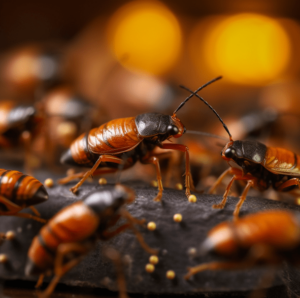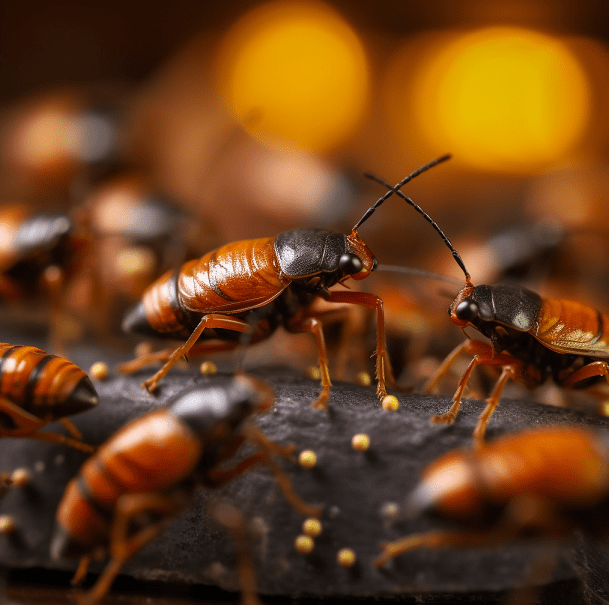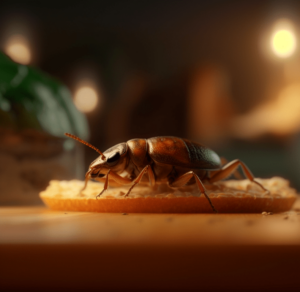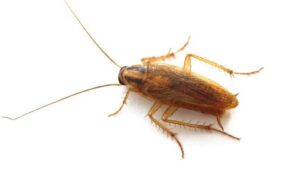Your Home Safe & Sanitized: How to Kill Cockroaches for Good

Table of Contents
Cockroaches rank as one of the most common household nuisances that can cause chaos in your living space. Their unsightly appearance is just the beginning; these pests can also transport bacteria that pose a threat to your well-being and family. When faced with a cockroach invasion, it’s crucial to address the issue promptly to avoid further spread. However, with so many different methods and products available to kill cockroaches, it can be confusing to know where to begin.
In this article, we will dive into the most effective strategies to protect your home from cockroaches for good. We’ll cover the various cockroach species, their behaviors, and their typical hiding spots. Additionally, we’ll address frequently asked questions such as whether cockroaches can fly or bite and offer advice on how to exterminate them efficiently. By following our comprehensive guide, you’ll be well-equipped to eliminate these irritating pests and keep them from returning.
Key takeaway:
- Argentine ants are invasive and aggressive creatures that can cause damage to belongings and pose health risks to humans.
- Interconnected Super-Colonies are ruled by multiple queens and can reproduce quickly, outcompeting native ant species.
- Argentine ants have a complex social structure and use chemical signals for communication and coordination.
- It is important to address Argentine ant infestations due to potential damage, frustration, health risks, and environmental impacts.
- Signs of an Argentine ant infestation include ant trails, nesting sites, aphid populations, electrical issues, and the presence of other pests.
- Prevention measures include sealing entry points, maintaining cleanliness, proper garbage disposal, eliminating sources of moisture, and managing aphids.
- Non-toxic and DIY methods can be used for minor infestations, but severe infestations may require chemical treatments with caution.
Types of Cockroaches
Cockroaches are invasive species, and there are more than 4,500 of them in the world. Only 69 types of cockroaches live in America, but only 30 species are considered pests. Here are some of the most common ones you can encounter in the USA:
- Asian cockroaches (Blattella asahinai): These insects can be confused with German ones but they are a bit larger, and their color is light brown. Their native habitat is Southern Asia, but they have spread to other parts of the world.
- Smoky brown cockroaches (Periplaneta fuliginosa): Their color is dark brown or mahogany. These insects mostly live outdoors, but they can sometimes enter houses in search of shelter and food.
- Australian cockroaches (Periplaneta australasiae): Their color is yellowish-brown and their thorax and wings are pale yellow. They are larger than other species and prefer to live in warmer climates.
- German cockroaches (Blattella germanica): These insects are small and light brown in color. They live in houses, commonly in kitchens and bathrooms.
- American cockroaches (Periplaneta americana): They are also known as the “palmetto bug.” They are one of the largest species of a reddish-brown color and can fly short distances.
- Brown-banded cockroaches (Supella longipalpa): The insects are light brown, and they have distinctive bands across their wings. They can also invade households because they like warm and dry areas.
- Oriental cockroaches (Blatta orientalis): The insects are also known as black cockroaches, and they can be commonly found in crawl spaces and basements because they like cool and damp places.
These species can vary according to the region, and they are usually encountered in different American states. Let’s have a closer look at some most common species.

American Cockroaches
These insects, referred to as the “palmetto bug” or “water bug,” prefer warm and damp spaces. They are encountered in different states, like Arizona or California because of their love for warmth and humidity. Since Arizona cockroaches do not differ much from California cockroaches, let’s consider their common characteristics:
- Size: They are large insects, about 1.2 to 1.6 inches (3-4 cm) long. Their lifespan is relatively long – up to 1.5 years.
- Appearance: The insects are reddish-brown or dark brown with a yellowish figure-eight pattern on their heads.
- Wings: These bugs can fly, but they prefer running or crawling. They can fly short distances, too, due to their well-developed wings.
- Habitat: They prefer dark and moist places in the basements, sewers, drains, and crawl spaces. These roaches may also live in gardens and trash areas.
- Feeding: These insects are omnivorous, so they can feed on decaying matter, human food scraps, and pet foods.
- Behavior: They are nocturnal insects scavenging for food at night. They can survive in adverse conditions, run fast, and are pretty resilient.
- Health concerns: These roaches are hazardous and pesky because they can contaminate surfaces and food with pathogens, bacteria, and allergens, causing respiratory issues and asthma in some people.
You should do your best to prevent infestations or address them as quickly as possible.
German Cockroaches
These insects are the most common cockroaches in house environments. They are characterized by the following:
- Size: These insects are small, 0.5 to 0.6 inches (1.3-1.6 cm) long. Their bodies are oval-shaped and flattened.
- Appearance: The color is light brown to tan. The bugs have two dark stripes behind their head.
- Habitat: These insects are indoor pests living in both residential and commercial buildings. They prefer humid and warm places, like kitchens and bathrooms, close to food sources.
- Reproduction: German cockroaches can reproduce rapidly. Egg capsules contain 30-40 eggs, and their lifecycle completes within 1-2 months.
- Behavior: These pests are nocturnal. They hide in cracks and crevices in the daytime and climb out at night to navigate ceilings, walls, and kitchen appliances in search of food.
- Infestation risks: These roaches carry allergens and pathogens that may cause bad illnesses and trigger asthma or allergies. They contaminate foods, leaving behind unpleasant odors.
You have to control these pests with a combination of sanitation practices and insecticides if needed. These insects reproduce fast, so the infestations can be challenging if you do not take preventive measures. You may need professional help to kill cockroaches in your home if they invaded it.
Oriental Cockroaches

These insects are known as “water bugs” or “black beetles.” Such black cockroaches are common in humid, dark, and cool environments. Their characteristics include the following:
- Size and appearance: These insects are medium-sized, about 1 to 1.25 inches (2.5-3.2 cm) long. Their exoskeleton is dark brown or black. They have wings, but only males can fly.
- Habitat: Like other types of cockroaches, these bugs like dark, cool, and damp areas, invading basements, sewers, crawl spaces, and drains. They do not live in kitchens or other warm and dry environments. They can also live outdoors, in leaf litter, mulch, and garbage.
- Feeding: These insects are omnivorous, feeding on garbage, plants, and other organic matter. They can also eat cardboard and starchy foods.
- Behavior: These bugs are nocturnal. They move slowly and prefer to stay close to water and food sources. They emit a strong disgusting odor which becomes awful when the infestation is large.
- Reproduction: The egg cases called ootheca are dark brown. Females carry them for a short time and then deposit in a sheltered area to hatch. The lifespan of adult insects is longer than in other species, and their lifecycle is also rather long – it takes them 6-12 months to reach adulthood.
- Health issues: These cockroaches can pose health risks by contaminating food and utensils with allergens and bacteria. Their presence may trigger allergies and asthma, too.
You need to reduce moisture and eliminate food sources to prevent infestations and address the problem to professionals if you have already faced it.
Brown-Banded Cockroaches
These cockroaches have distinctive brown bands across their bodies that gave the name to this species. Their characteristics include the following:
- Size and appearance: These cockroaches are relatively small, 0.5 to 0.6 inches (1.3-1.6 cm) long. They are light brown or tan with brown bands across their wings that are more noticeable in nymphs and females than in males.
- Habitat: These insects prefer dry and warm places, so you can find them in higher layers of your household, like upper cabinets, appliances, ceilings, and furniture. They do not need much moisture for thriving, unlike other roach species.
- Behavior: They are nocturnal and prefer to hide in cracks and crevices during the day. They can be seen in various areas of the house, like living rooms, bedrooms, and offices. They can also infest electronic devices and get shelters within upholstered furniture.
- Feeding: These roaches can eat everything, including book bindings, wallpaper paste, dead insects, starchy items, and glue. They also like food debris and crumbs, so pantries and kitchens can become their dwelling places most often.
- Reproduction: An egg case called ootheca can contain 10-18 eggs. Females attach such cases to surfaces near food sources.
- Health issues: These roaches are not known as major carriers of diseases, but they contaminate surfaces and food with allergens and bacteria, like their other counterparts do. They can also trigger allergies and asthma symptoms.
You need to take prompt action as soon as you suspect the first signs of infestation until they spread to other areas of your building.
Types of Cockroaches & Their Appearances
Various cockroach species differ by their appearance and behavior. You may also wonder “What do cockroaches hate” to prevent infestations. So, here are some general characteristics that make cockroaches different from each other:
- Size: Cockroaches can be small, medium-sized, and large. For example, the American species is big cockroaches, while German is small.
- Coloration: The colors may also differ much. You can see reddish-brown, light brown, tan, dark brown, and black hues in cockroaches. They can vary between species.
- Wings: Flying cockroaches are not uncommon. Some species have well-developed wings and can fly short distances, like American cockroaches.
- Preferred habitats: They differ from species to species. For instance, German species live indoors in warm and human environments, while oriental cockroaches prefer damp and cool areas like sewers and basements.
- Nocturnal living: Most cockroach species are nocturnal. In the daytime, they hide in cracks, crevices, dark holes, and sheltered areas. It helps them avoid potential threats.
- Climbing: It is a characteristic of most cockroaches. However, this ability can also vary. For example, German and Asian cockroaches are perfect climbers, while American ones are not too skilled at it.
- Food preferences: All cockroaches are omnivorous. They can feed on any kind of organic matter. However, species have different preferences, for instance, German roaches like grease and food crumbs, while Oriental ones prefer decaying organic matter.
- Reproduction: The speed of reproduction also differs. The German species reproduce rapidly with a larger number of offspring, while American species have longer life cycles and reproduce more slowly.
There may also be differences within a species due to individual characteristics and living conditions.
How to Kill Cockroaches?
When you want to kill cockroaches and get rid of them effectively forever, here are some general recommendations that we hope can help you control these pesky pests. They are the following:
- identify and eliminate possible food and water sources;
- remove clutter and get rid of hiding places;
- use cockroach baits near baseboards, in corners, and under sinks;
- apply insecticides carefully along baseboards, cracks, and entry points;
- utilize cockroach traps;
- keep your environment clean by tidying your home regularly;
- seek professional pest control if the infestation is severe or persistent.
We have also provided some helpful information on how to kill cockroaches here, so continue reading.
Chemical Methods of Killing Cockroaches
Chemical methods are what you are exactly looking for, and you may need to know what kills cockroaches instantly. Here we have collected some common suggestions on chemical pest control. They are the following:
- Insecticide sprays in aerosol sprays or ready-to-use spray bottles. You need to follow the instructions carefully for more efficiency and safety.
- Cockroach baits that consist of a mixture of attractants and insecticides. Using boric acid for cockroaches is quite common here. You can both kill cockroaches and control their populations and reproduction with them.
- Dusts and powders applied to cracks, crevices, and voids. They contain a residual insecticide that remains active for an extended period.
- Growth regulators (IGRs) that disrupt normal reproduction and development of cockroaches. They are often used in combination with other insecticides.
- Professional pest control applied in the case of severe or persistent infestations. Professionals can use a range of techniques to eliminate cockroaches safely due to your specific conditions.
No matter what type of chemical method you are using, you need to follow the instructions provided by a manufacturer and observe all the safety precautions.
Non-Chemical Methods of Killing Cockroaches
You may also need to know how to kill cockroaches if using chemical methods is not applicable. Here are some tips on what kind of control measures you may apply:
- Using traps: They can be sticky or cockroach monitoring. You have to place them in areas where the insects are active, for example, along baseboards, in corners, and near entry points.
- Vacuuming: You should do it regularly and properly dispose of the vacuum bag or contents. It helps remove eggs, droppings, nymphs, and dead cockroaches from your household.
- Physical removal by trapping, squashing, or using a cockroach catcher tool.
- Treatments with heat or cold: What kills cockroaches effectively is extreme temperatures. If you expose infested areas or items to high temperatures (above 120°F or 49°C) for an extended period of time, it will kill the insects and their eggs. The same can be said about freezing temperatures (below 32°F or 0°C) that are also lethal for cockroaches.
- Proper sanitation that is crucial for cockroach control and infestation prevention. Clean your home regularly, remove food debris, spills, and store your food in sealed containers.
- Placing physical barriers by sealing cracks, crevices, and other entry points. You can use caulk or weather stripes to close gaps around windows, utility lines, and doors. Monitor walls and pipes for access points, too, to prevent cockroaches from moving from one room to another.
- Apply the principles of Integrated Pest Management (IPM), combining such non-chemical methods as monitoring, sanitation, and exclusion.
However, if the infestation is severe, you cannot apply non-chemical methods only because they may not be pretty effective.
Prevention of Argentine Ants in Texas and Other Areas from Entering the Home

Prevention and Long-Term Control of Cockroaches
Prevention relies on your clear understanding of what causes cockroaches in your house and what you need to do to avoid infestations. Think about the following preventive measures and long-term control strategies:
- keep your living environments clean and free from food debris, spills, and crumbs by regular mopping, sweeping, and vacuuming floors;
- store all your food in sealed containers, especially such dry goods as grains, cereals, and pet food;
- reduce the number of water sources by fixing any leaks or plumbing issues promptly;
- seal all entry points, like gaps, cracks, and openings in windows, floors, and doors;
- eliminate clutter in your living space by getting rid of piles of paper, unused items, and cardboards;
- conduct regular inspections of your home, especially kitchens, utility rooms, bathrooms, and basements;
- maintain outdoor areas by trimming shrubs and tree branches away from the house, cleaning yard debris, and keeping outdoor garbage bins tightly closed;
- implement an IPM approach combining preventive measures, regular monitoring, and targeted treatments;
- seek professional pest control services in the case of a persistent or severe infestation.
If you apply these methods regularly, you will be able to get rid of these nuisance pests for good.
Cockroaches in Florida
Let’s make a short overview of the cockroach infestations in Florida. In fact, Florida cockroaches represent several species. They are the following:
- American cockroach;
- German cockroach;
- brown-banded cockroach;
- smokybrown cockroach;
- Oriental cockroach.
They are the most common species, though there are some others. The reasons for having cockroaches in house environments in Florida contribute to several factors.
- Climate: Florida has a warm and humid climate that forms an ideal environment for cockroaches that prefer high humidity and temperatures between 70 to 80°F (21 to 27°C) all year round. It is pretty favorable for these insects to breed, survive, and thrive.
- Multiple food sources: They may include human and pet food, garbage, and other organic matter. Florida has a dense population. It is abundant in restaurants and tourist destinations that become an ample food source in residential areas, commercial establishments, and outdoor environments.
- Numerous urban areas: Cities and suburbs ensure various shelter options for these insects. Multiple buildings, houses, bungalows, and huts provide a lot of hiding places, like cracks, crevices, and voids. Such factors as close proximity of buildings, interconnected drainage systems, and numerous utility lines help cockroaches easily move from one location to another.
- Outdoor habitats: Florida also has a lot of diverse forest areas, wetlands, and environments rich in vegetation. They provide food sources, moisture, and shelter to these insects.
- Shipping and travel: Florida is known as an outstanding hub for travel and shipping with its numerous airports, sea ports, and well-developed tourist facilities. Cockroaches can migrate in shipping containers and luggage, or simply be transported by people. They can move to buildings, hotels, and other locations without any obstacles resulting in severe infestations.
- Building construction: There are many older buildings here that have a lot of gaps, cracks, and deteriorated seals. They become convenient entry points for cockroaches. However, newer buildings are also vulnerable. They are aimed at energy efficiency, so they are tightly sealed, trapping moisture and creating perfect conditions for these pests.
All in all, cockroach activity in Florida is rather high, and professional pest control solutions should be applied.
Prevention and Control Measures for Florida Cockroaches
So, what do cockroaches hate? You need to know it for taking better prevention and control measures in Florida. Think about the following effective strategies:
- Cleanliness is the most effective prevention measure. Regular sweeping, mopping, and vacuuming floors and paying attention to kitchen and dining areas are crucial. Do not leave spills and crumbs unattended, always wash dishes and food containers after use. Dispose of garbage using sealed bins and remove them regularly.
- Proper storage of foods is important. Sealed containers are the best solution for storing dry goods, fruits and vegetables, and pet food. Never leave food out overnight. Check kitchen sinks, countertops, and appliances for cleanliness.
- Reduce water leaks and get rid of plumbing issues. Fix dripping faucets, and dry bathtubs, showers, and sinks after use.
- Inspect your home for cracks and openings. Seal all the unnecessary entry points, like gaps around windows, utility lines, and doors. Pay attention to cracks in floors, walls, and foundations, and check the spots where pipes and wires enter the house.
- Conduct regular property inspections, both indoors and outdoors, for the slightest signs of cockroach activity, like eggs, droppings, or adult insects. Be attentive to basements, attics, and crawl spaces.
- Keep the outdoor areas around your home well-maintained. Remove all yard debris and stagnant water sources. Trim vegetation and shrubs away from the building. Clean gutters and downspouts regularly to prevent the buildup of excess moisture.
- Consider professional pest control if needed. If you have already encountered the infestation and don’t know how to kill cockroaches, engage the services of a pest control company. They have a lot of expertise, experience, and access to professional techniques and treatments.
Cockroach control is a continuous process that can significantly reduce cockroach infestations in Florida and provide you with peace of mind.
Overview of Common Cockroach Species in Michigan
Michigan is another state where cockroach infestations are pretty common. You can find the following cockroach species there:
- German cockroaches;
- Oriental cockroaches;
- American cockroaches;
- brown-banded cockroaches.
Among the most common reasons of Michigan cockroaches appearing in households and offices, we would like to point out the following:
- Food sources caused by improperly stored food, spills, open garbage bins, and crumbs.
- Warmth and shelter. What causes cockroaches in Michigan homes is the climate. They often enter houses in search of warmth during cold winter months, using cracks, crevices, insufficient insulation, damaged building constructions, and gaps around doors and windows.
- Humidity and excessive moisture. They are usually attracted to the areas with plumbing issues, leaks, damp basements, and inadequate ventilation. They are also drawn by water sources in bathrooms, kitchens, and basements.
- Poor sanitation. Lack of consistent hygiene practices can lead to cockroach infestations. Failure to clean food debris, improper food storage, neglecting regular cleaning routines can create a favorable environment for these pests.
- Neighborhood infestations. Cockroaches can easily move from the infested buildings to adjacent areas via shared spaces, utility lines, and cracks.
- Travel. These insects can be brought home through luggage, infested items, and used appliances. They can travel in furniture, packages, and boxes.
If you want to prevent cockroach infestations in Michigan, think about effective prevention and control measures.
Prevention and Control Measures for Michigan Cockroaches
You need to know that prevention is more essential than all further attempts to kill cockroaches in your home. Let’s consider some effective strategies you can use to prevent and control cockroaches in Michigan.
- Ongoing sanitation practices. Clean food debris, spills, and crumbs. Store food in airtight containers. Tidy kitchen appliances, countertops, and floors. Use sealed containers for garbage disposal. Clean the remains of pet food and water bowls.
- Elimination of hiding places. Seal all possible entry points. Repair and replace window and door screens that are damaged. Remove clutter from your home and storage areas.
- Reduction of moisture. Fix all leaks, dripping faucets, and other plumbing issues. Ensure proper ventilation in bathrooms, basements, and crawl spaces. Use dehumidifiers. Clean gutters and downspouts regularly.
- Regular inspections. Pay attention to your kitchen, bathrooms, and basements. Detect the signs of cockroach activity, like droppings and egg cases. Discover all new cracks and openings and seal them immediately.
- Professional pest control. If you experience a persistent infestation, contact a professional pest control company for a combination of effective methods used by them for cockroach elimination.
- Education of people around. Your family members, tenants, or employees need to know about prevention measures and sanitation practices. The earlier you can address infestations, the more effective cockroach elimination will be.
These tips and suggested practices are not unique, but their proper application can reduce risks of cockroach infestations in MIchigan homes and property.
Final Thoughts
Cockroach infestations can actually occur in any state, especially in those where climate conditions allow for it, like in Florida or Michigan. You can encounter different types of cockroaches there and need to know what to do about such infestations.
Cockroach control is crucial for your health and safety because you can avoid pathogen transmission, food contamination, and severe allergic reactions. It is especially important if you have children. Contaminated indoor environments can compromise hygiene and create unpleasant living conditions. If it is a restaurant or hotel, the presence of these pests can negatively impact their reputation. In addition, cockroach infestations can cause distress and anxiety in individuals and families. They can develop the fear of cockroaches known as katsaridaphobia that can disrupt sleep and influence daily activities.
You should know how to effectively control secondary infestations, prevent them, and how to kill cockroaches if you have already encountered this disaster. Overall hygiene and cleanliness are the best prevention methods. Inspect your home or property regularly and contact professional pest control services immediately if you have an issue.
FAQ
Yes, some species can fly, but not all of them. The examples of flying cockroaches are the American cockroach and the smoky brown cockroach that have well-developed wings.
In general, cockroaches do not bite humans. However, you may encounter an instance when they are threatened or if the food sources are too scarce for huge populations. You can experience their bites on the hands, feet, and fingernails, but they are not harmful. They can cause some discomfort, including redness, swelling, and itching. In rare occasions, cockroach bites may result in secondary infections if the bite area is scratched severely.
Cockroaches eat everything related to natural matter. The most common food includes rotting food, fruits, vegetables, dead animals, starches and carbohydrates, sweets and sugar, protein sources, grease and oil, plants, and plant materials. They can survive on limited food sources and even eat non-food materials.
Baby cockroaches are called nymphs. They are smaller in size than adult cockroaches, have a lighter coloration, and may have fully developed wings. Their bodies are more cylindrical and less flattened. They have long antennae for navigation and sensory perception and can move very fast.
The most common attractants for cockroaches are food sources, crumbs, grease, and pet food. They are also attracted by water sources and moisture, the availability of shelters and hiding places, and warmth. Certain odors, like those of decaying organic matter, scent of other cockroaches, and strong food odors can be powerful attractants. If there are many entry points in your home, be sure that cockroaches make good use of them, too.
To kill cockroaches, you can utilize various methods, like chemical insecticides, cockroach baits, sticky traps, natural remedies (diatomaceous earth, essential oils, and soapy water solutions), and professional pest control. Preventive measures are immensely important, too.
Different species of cockroaches have various lifespans. They can range from a few months to over a year. Cockroach longevity can also be influenced by such factors as weather conditions, access to food and water, availability of shelters, predators’ presence, temperatures, and applied control measures.


